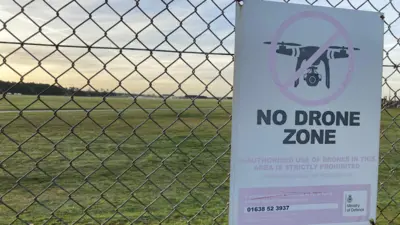We've updated our Privacy and Cookies Policy
We've made some important changes to our Privacy and Cookies Policy and we want you to know what this means for you and your data.
Terror alerts sow travel confusion
Top Stories
- Author, Nick Childs,
- Role, ҙуПуҙ«ГҪ defence and security correspondent
There has been a flurry of alerts from several governments - US, British, Japanese - warning travellers of the high risk of terror attacks in Europe, especially its biggest countries - Britain, France, and Germany.
But what are travellers meant to make of these alerts, when there is so little information to go on?
Governments say they provide such travel alerts in order to keep the public informed.
The "are issued to disseminate information about short-term conditions, either transnational or within a specific country, that pose significant risks to the security of US citizens".
Top Stories
Some sceptics argue that, on this occasion, they may just be covering themselves, after recent leaks suggesting heightened concerns about possible Mumbai-style attacks in Europe, and in the aftermath of previous attacks such as the Bali bombings.
Such alerts are often meant simply to remind tourists to be vigilant, and perhaps to report suspicions when they have them.
But, again, the critics argue that such warnings frequently confuse people. At the very least, the critics say, unless alerts are very specific, they are of little use.
Top Stories
'Sensitise the system'
These particular alerts are not meant to dissuade people from travelling, but there is a risk that they could do just that, by spreading unnecessary alarm. In that sense, they could be counter-productive.
But defenders of the system say it is always a difficult balance in deciding how much information to publish, and when. And they say such warnings can also act as a deterrent to possible plotters.
Even though there is much greater co-operation on intelligence-sharing than there was, different governments sometimes take different views of such calculations, which often lead to different policies on when to issue alerts or warnings, or change threat levels.
There are similar controversies surrounding the threat level warnings adopted by governments.
Many are variations on the colour-coded alert system introduced by the United States in 2002, in the wake of the 11 September 2001 attacks.
In a five-tier system, the top three US alert levels are yellow for elevated risk, orange for high and red for severe risk of a terror attack or attacks.
Again, these are meant to inform the public.
Perhaps more significantly, they are meant as signals to government agencies, local authorities, law enforcement organizations, and the like on how to prepare and respond. They are designed, as one expert put it, "to sensitise the system".
But there has also been criticism that the decision-making processes and the information on which decisions are made remain largely secret.
In the United States, there has been criticism that the system has also been open to political manipulation.
In Britain, the political element has been largely removed by handing over the decision-making process for assessing the threat from international terrorism to an expert body, .
Top Stories
More to explore
Most read
Content is not available








